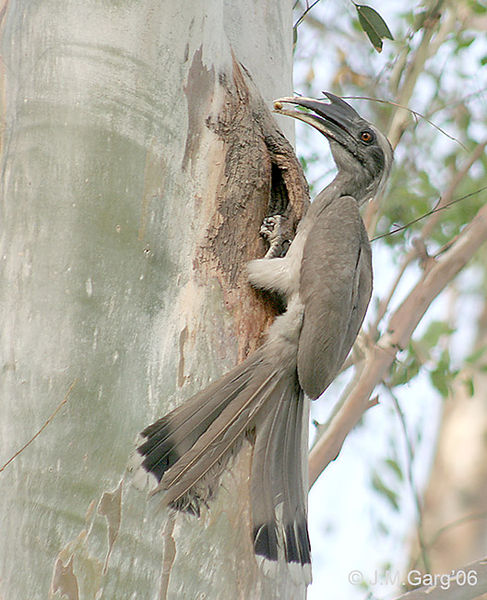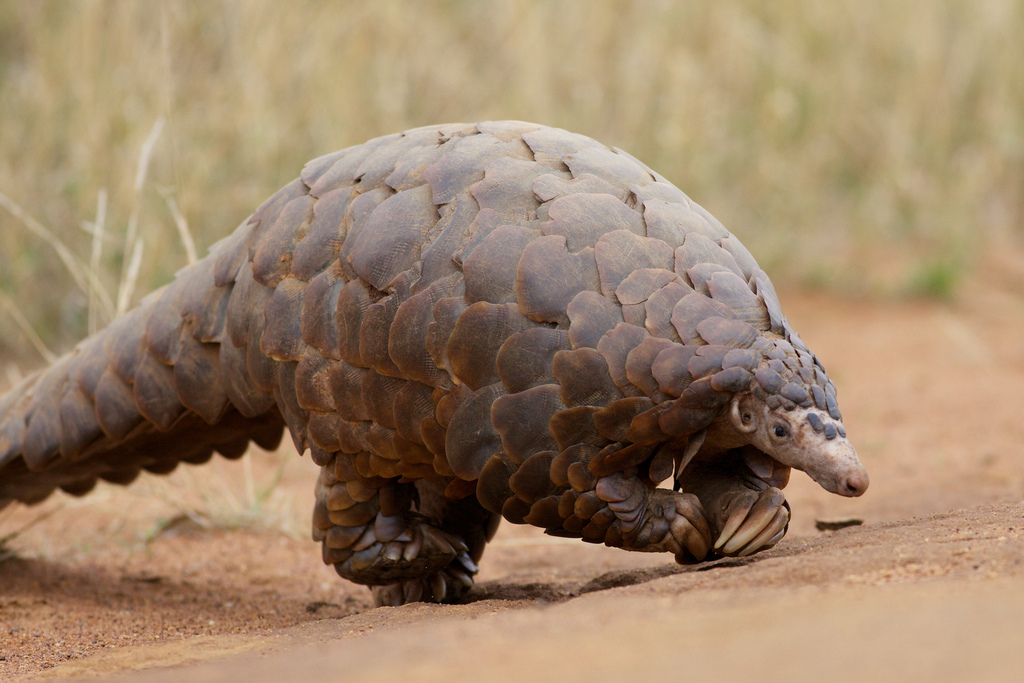Adaptation is one of the key requirements for successfully evolving and staying alive in the race of “the survival of the fittest”. The Indian Grey Hornbills of Indore are playing by these rules and have adapted to a highly urbanized environment created by human beings. In the concrete jungles where there are very few trees left, these members of the bird family known for their elaborate arrangements of creating nests in tree holes and plastering it with mud, have learnt to build nests in crevices in multi-storied buildings and feed on food such as rotis and biscuits.
“This is the first recorded evidence of change in nesting and breeding behaviour of Hornbills, when a pair of birds has been spotted nesting inside a cavity in a building,” said ornithologist Ajay Gadikar who made the discovery and documented the adaptive behaviour of grey hornbills.
“It is exciting that Hornbill is evolving and adapting to its surroundings, which increases its chances of survival. But at the same time it indicates that there are not enough trees in the city to host birds,” said Gadikar speaking about the resourcefulness of the pair of birds.
From Trees Cavities to Building Crevices
Nesting season of Grey Hornbills lasts for about 3 months from March to June. During this time the mating pair looks for a tree hole with ample space for the eggs to hatch and the hatchlings to comfortably live until they are old enough to come out of the hole. The mom shares this home by sealing the nest entrance using its excreta and mud-pellets supplied by the male.This is to allow the female to put her beak out and get the food supply from the male in her self-made maternity home while she waits for her eggs to hatch and later the chicks to grow older safely tucked inside from prying and hungry predators.
Gadikar has been studying the behaviour of grey hornbills for two years and observed previously the change in food habits of these birds. He found, the hornbills had already started altering their choice of food owing to lesser wild berries and fruits and more man-made food available in their rapidly changing surroundings.
“Hornbills, who usually feed many insects to the chicks, were found to feed rotis (Indian bread) and biscuits in the daily diet of the chicks as well. It seems this bird species are now trying to adjust to the new environment and prepare their chicks for a situation wherein they may have to survive amidst fewer trees and some supplementary diets,” he said.
Explaining on the new and unique nest of the Hornbills, Gadikar said the nest was created inside a cavity left in a wall, along a window around 3 inches in diameter and 20 feet above the ground, The female hornbill had almost totally sealed the window leaving only a small slit-like opening.
 Grey Hornbill and it’s Concrete Nest, Courtesy Times of India
Grey Hornbill and it’s Concrete Nest, Courtesy Times of India
“I observed the nest regularly for around 10 days and found that the nest was occupied one-and-half month’s back and presently the chicks are fledged in. I was able to hear calls made by the chicks demanding food, as and when the male hornbill comes to feed the female and chicks,” he said.
Further, the hornbills are learning to live unobtrusively in an area which is heavily populated. The building which is located near a big playground has a lot of activity through the day. The male hornbill takes care to bring food for the female and chicks without drawing attention to itself.
A bird used to living in natural tree cavities for generations and generations has now evolved to live in concrete homes devoid of the smells and signs of Mother Nature’s handiwork but still giving it a chance to secure its future.
More Related Stories,
Grey Hornbills at Dusk: Book Review
Hornbills Feeding Bread and Biscuit to their Chicks










One thought on “New Nesting Ideas Helping Grey Hornbills Survive in Treeless Cities”